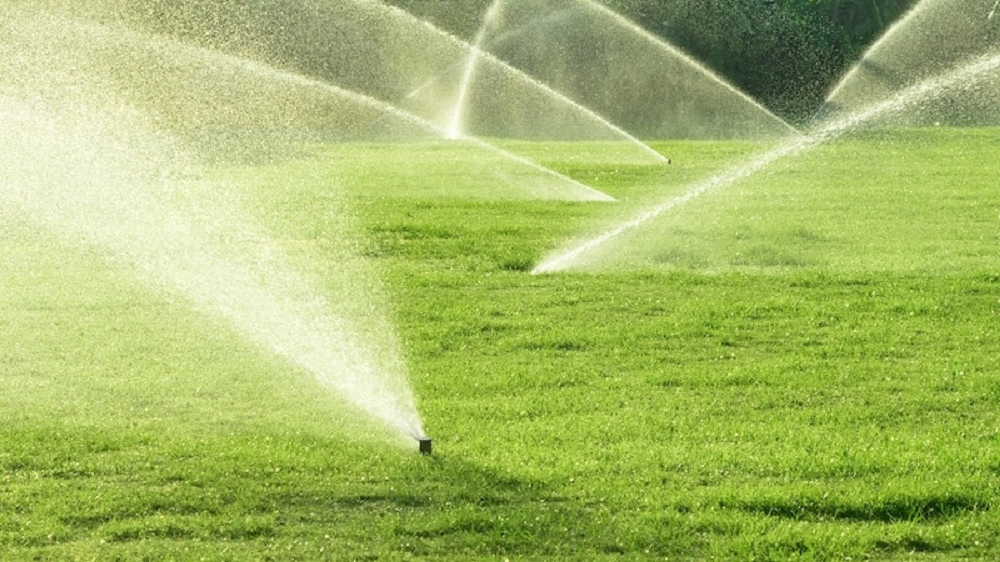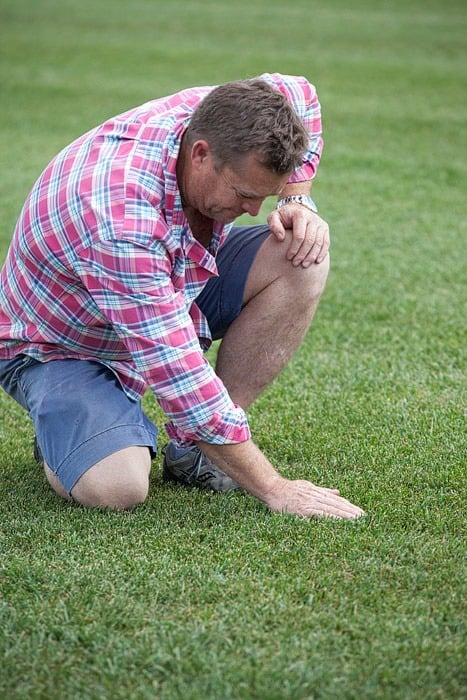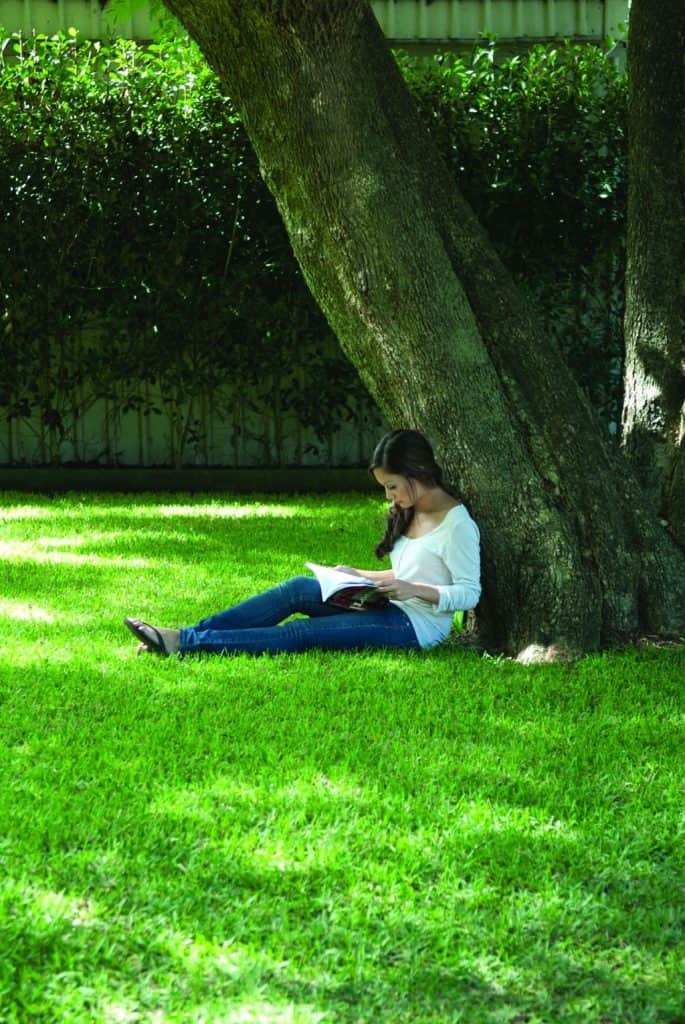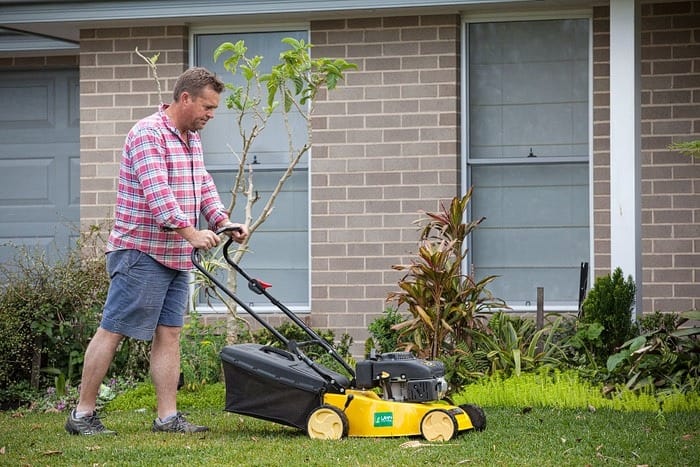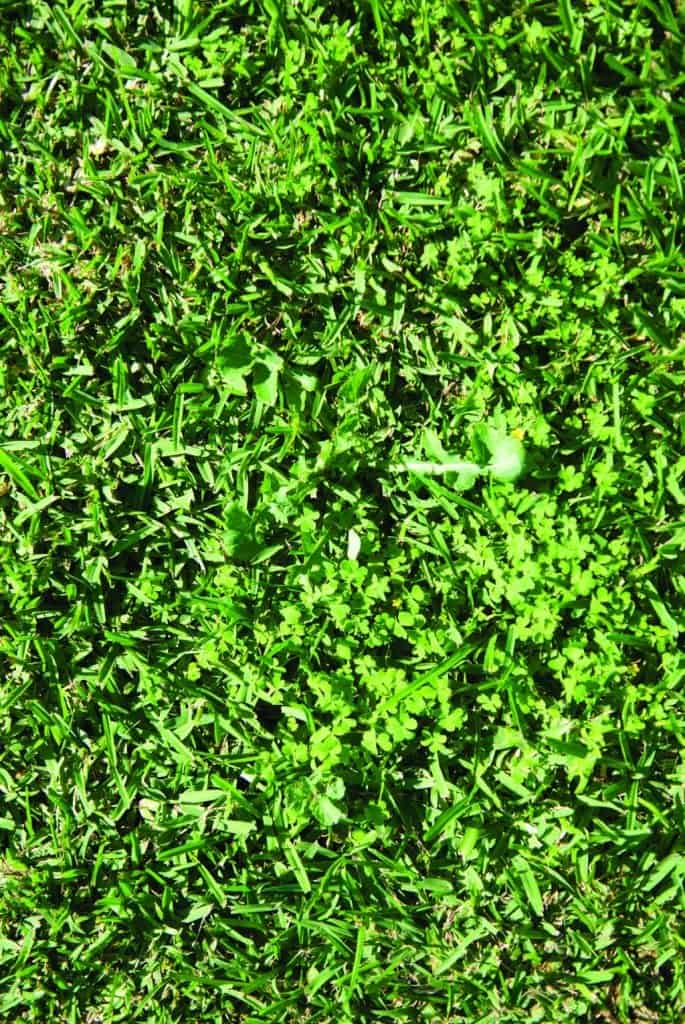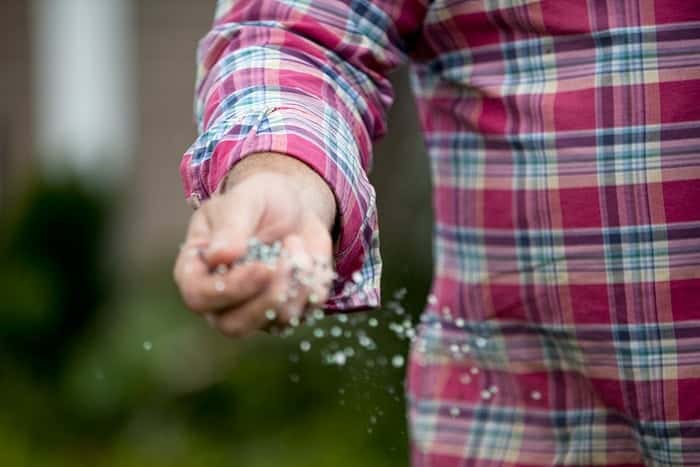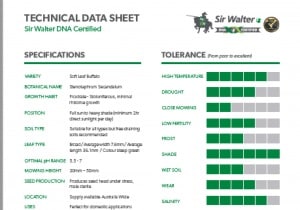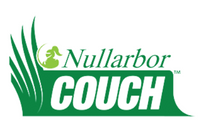Buffalo Grass & Lawn Care Guide
Buffalo grass has built up a solid reputation as a really tough turf for Australian lawns. There are a number of Buffalo varieties each with some really special characteristics that make them a standout choice for your lawn.
Buffalo lawn is especially popular thanks to its shade and drought tolerance, soft leaf, lush green colour even through winter, low maintenance, and its resistance to wear and tear.
You’ve probably heard the term Buffalo grass bandied around a lot but there are a number of varieties and species available.
So What Exactly is Buffalo Grass?
Here at Grech’s Turf Supplies we grow Australia’s most popular variety of Buffalo grass:
Our Buffalo grass range (Stenotaphrum secundatum) is 100% Australian born and bred for Australian conditions with many years of research and careful cultivar selection underpinning its success.
Grechs Turf Supplies (An authorised Lawn Solutions Australia turf grower) grow Buffalo grass which should not be confused with American Buffalo grass (Bouteloua dactyloides), which is an entirely different species.
Some Councils list wild Stenotaphrum secundatum as a weed but our Buffalo grasses are bred to be environmentally friendly and superior quality for an attractive lawn because the seed is sterile and they are Winter active so they stay greener than the older buffalo varieties which are commonly known as Shademaster or soft leaf buffalo.
Good quality buffalo lawns when well fertilised and watered produce lush green growth throughout both hot and cold seasons. Buffalo lawn will be happy even in 80% shade; that’s as little as 3 hours of sunlight per day.
And its strong root system allows it to recover quickly when damaged, putting out new growth and preventing weeds from taking over.
The new varieties of buffalo lawns require less water because they have a better root system which is great for those hot summers and have lower requirements for fertiliser which is better for the environment and maintenance costs.
And the new Buffalo varieties demonstrate excellent pest and disease resistance so you’ll need to use fewer chemicals in comparison to the old varieties.
Buffalo lawn with its low allergy rating is a wonderful grass choice for family backyards. You’ll love it, the kids will love it and even the dog will love it.
Buffalo Lawn Care
Buffalo grasses are renowned for their low maintenance requirements but regular watering, mowing, and applications of fertiliser will ensure your lawn stays looking its best regardless of what the weather, pests and weeds can throw at it.
Summer
Our Buffalo range of grass has been bred to enhance drought resistance but even the toughest lawns will still require some watering throughout the summer to stay green and healthy.
Ideally, as your new lawn establishes itself aim for two and maybe three light waterings each day during the hot summer months. This establishment phase may last 2 months.
Once your lawn has developed a healthy root system, one or two deep waterings each week should be adequate for the new softer, finer Buffalo varieties if the turf has been laid on a good quality soil
Deep watering allows the moisture to penetrate into the soil and encourage deeper root growth. Sub surface drip irrigation will usually supply the correct amount of water in around 60 minutes but it will take much less with a sprinkler system which is commonly 15 or 20 minutes depending on the type of system, sprinkler spacing and operating pressures.
Sir Walter is extremely drought tolerant and will usually only need deep watering once or twice per week on good loamy soils and more often on very sandy soils.
If your Buffalo lawn starts to go grey in colour it’s probably a sign it would like some water. Most grasses will protect themselves from hot, dry weather by folding their leaves over, which gives a grey appearance in comparison to the normal healthy green colour of well-maintained turf.
The ability of Buffalo grasses to quickly recover from periods of neglect even when they appear brown and dead is legendary when good rainfalls return or irrigation is recommenced.
Buffalo grass can be susceptible to a pathogen which causes brown patches to appear on your lawn. It usually appears during warm humid weather and it pays to eliminate this as the cause before you start increasing your watering regime.
Winter
Buffalo grasses are a great choice for shaded areas and are ideal for those areas of your lawn where other grasses die off in the winter.
Buffalo grasses will live in areas with as much as 70% shade. Sir Walter will even be quite happy with as few as 3 hours of sunlight daily.
The older buffalo varieties will develop a purple-reddish colour in Autumn and Winter. These varieties are generally known as soft leaf or Shademaster buffalo.
The new buffalo grasses may develop a slight purpling colour but don’t worry as the typical lush green colour will return quickly as Spring approaches.
The green colour during Winter can be extended in the new varieties like Sir Walter by applying good quality fertilisers in early Autumn.
Start preparing your lawn in autumn for the winter months. Use the correct herbicides for any weeds that might be starting to show and apply some fertiliser too. You can buy a product called Oxafert which does both fertilising and Pre emergent weed control.
Keep your mowing heights a little higher as grass growth slows down. Aim for a leaf length of between 60 and 70mm. The longer grass blades provide more leaf area for photosynthesis during the shorter days of Winter.
It’s important to remove fallen leaves and branches from your lawn. The idea is to maximise your lawn’s exposure to the available light and maintain air movement, which will help keep your lawn disease-free.
This may mean that you still mow your lawn each week to remove the leaves but a higher level than in Summer.
Spot spray throughout the winter months and keep an eye open for Bindi during August as this is a good time to catch it before seeds form.
Mowing
All Buffalo grasses do well in full sun but regular mowing will help keep your lawn looking its best.
Thatch—the layer of dead material at the base of grass blades—can become an issue if you don’t mow regularly and let the grass get too long.
A little thatch can help keep your lawn healthy during hot periods but you don’t want it to build up too much or it may cause the grass to overheat and even die.
Sir Walter is a low-thatch grass and produces the least thatch of most of the Buffalo range. Avoid cutting your lawn too low and causing scalping of the lawn as the turf usually takes a long time to recover.
Although Buffalo grasses will quickly recover when damaged if you consistently cut your lawn too low it can eventually kill the grass.
The ideal height for Buffalo grass is between 20 and 25mm. But keep the grass a little longer during the Winter—around 30 to 50mm.
Weeds in Buffalo Lawn
Buffalo grasses form dense root systems which will protect against weed invasion to some extent. It is important though to repair dead or bare patches quickly to prevent weeds taking hold.
Some herbicides are species-specific and it pays to check the instructions on the label carefully for the best times of the year to apply.
For weeds such as clover, spot spraying with a selective herbicide is very effective.
September is a good time to use a selective broad spectrum spray that will kill weeds but will not affect Buffalo grass.
Lawn Lovers Buffalo Lawn Weed Control and Amgrow Winter Grass Killer are both very effective.
It’s a good idea to use pre-emergent sprays during Autumn and Spring to hit weeds on the head before they start to get a toehold. You can buy a product called Oxafert which does both fertilising and Pre emergent weed control.
Be very careful if you choose to use glyphosate (Roundup or Zero are some of the Trade names it is sold under).
Consider applying it with a brush to the leaves of the weeds only as spray drift will kill Buffalo.
The brush method with Glyphosate is very useful when trying to eradicate couch or Kikuyu out of buffalo lawns.
Buffalo Lawn Fertiliser
It is good practice to fertilise the ground before you lay new turf. Pre lawn fertilisers can be spread evenly over the surface and lightly raked into the soil.
This method will allow the roots to penetrate the soil and capture the fertiliser when the lawn is getting established. Repeat fertilising two weeks after laying the lawn and then every couple of months for the first year.
One your lawn is established apply fertiliser in early Spring, early Summer and mid Autumn.
Fertilisers help keep your grass green and healthy which not only makes your lawn look great but helps prevent disease and weed infestation.
They provide the nutrition your grass needs to recover from damage and will help it to resist pests and disease and drought. Slow release fertilisers are your best choice such as Grech’s Top Turf fertiliser or Seasol fertiliser.
Buffalo Lawn Repair
If your Buffalo turf receives minor damage it will most likely repair itself. In more serious cases you may need to take some action with additional water and fertiliser.
You can also assist repair by aerating the patch with a fork and adding some topsoil so that it is easier for the plant to put more roots down into the soil.
Fungal disease can be a problem for Buffalo grasses (like all warm season grass types) in more humid parts of the country.
Prevention is the best cure but if fungal diseases appears on your lawn try reducing watering. Only water in the morning.
Never water at night—the fungus is spread through water and mow when the grass is dry. Apply a fungicide such as mancozeb and use Kelp and fish extract fertilisers like Sea Sol and Charlie Carp.
Remove all lawn clippings and any other leaf matter that may increase humidity and reduce airflow.
You may want to prune any shrubs or trees that shade the lawn to increase airflow as well. In particularly severe outbreaks you may need to use a fungicide but as with all poisons be careful.
It may take some months for the lawn to recover especially after a serious infestation.
You may need to replant any dead patches in your lawn to prevent weeds taking hold. This is true whether it’s a fungus, lack of water of neglect that has caused the problem.
Bugs such as African Black beetles and Army worms may damage your turf. If the infestation is serious you may want to treat with a pesticide.
Where to Buy your Buffalo Instant Turf
Grech’s Turf is renowned for its top quality Buffalo lawn varieties throughout the Sydney, South Coast, Central Coast, Southern Highlands, Blue Mountains and Hunter Valley regions of NSW.
More than 3 decades of turf farming experience ensure you get lawn varieties with exceptional growth, hardiness, and colour.
Sir Walter costs a low $15.50 per m2 .
Thankfully, your new Buffalo lawn won’t cost the earth. And with prompt delivery 6 days a week your new Buffalo lawn is fresh and ready here at our farms waiting for you.
Product Downloads

